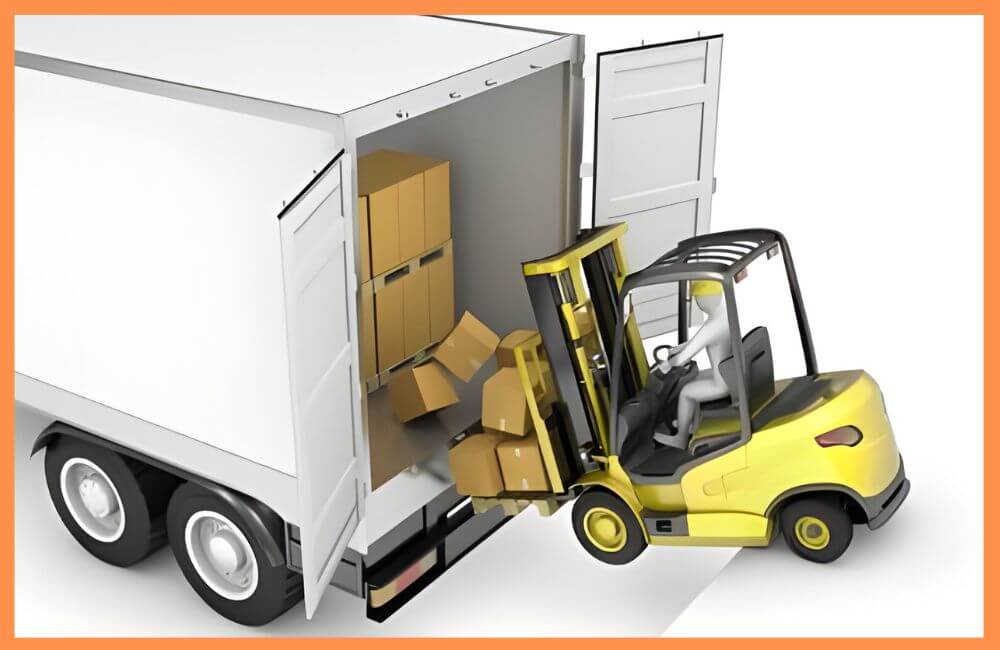Lift trucks, also known as forklifts, play a crucial role in various industries, helping with material handling and enhancing efficiency. However, due to their nature and operation, lift trucks can be involved in accidents, leading to injuries, damage, and even fatalities.
Understanding the most common type of forklift truck accidents is essential for promoting safety in the workplace and implementing preventive measures. In this article, we will explore what is the number one type of lift truck accident.
what is the most common type of lift truck accident?

The most frequent type of lift truck accident that we encounter is the tip-over. This unsettling event can occur in various scenarios, such as when the lift truck is burdened with too heavy a load, navigates a sharp turn too swiftly, or traverses an uneven surface.
The consequences of a tip-over can range from significant damage to the vehicle itself to, more critically, severe injury or even fatality for the operator or nearby individuals.
Common Causes of Lift Truck Accidents
Below find the most common causes of forklift accidents:
- Operator error or negligence
- Lack of proper training
- Poor maintenance of equipment
- Overloading the lift truck
- Improperly stacked or unsecured loads
- Inadequate workplace design or layout
- Limited visibility due to blind spots
- Failure to follow safety protocols and procedures
- Operating at unsafe speeds
- Environmental factors such as slippery floors or uneven surfaces
Wet or slippery surfaces, mechanical issues, poorly and unevenly loaded forks, and inattentive driving are additional factors that contribute to forklift accidents.
People hurt in lift truck accidents frequently sustain fractured bones, crushed bones, head, neck, and back injuries, internal bleeding, and lacerations, and regrettably, some of these accidents result in fatalities.
Read More – What Happens When a Truck Driver Has an Accident
Common Types of Lift Truck Accidents
Lift truck accidents can vary widely, but several types are more common than others. Understanding these can help in formulating better safety protocols and training programs. Here are the most frequent types of lift truck accidents:
1. Tip-Overs:
As mentioned, tip-over accidents are highly common and dangerous. They can occur when the truck is improperly loaded when making sharp turns at high speeds, or when operating on uneven surfaces. Both lateral (sideways) and longitudinal (forward or backward) tip-overs pose significant risks.
2. Collisions with Pedestrians:
Lift trucks operating in areas where pedestrians are present can lead to collisions. Such accidents often result from poor visibility, lack of awareness, or operating the truck at an inappropriate speed.
3. Falling Loads:
Incorrectly secured or overbalanced loads can fall from the lift truck, posing a serious risk to operators and nearby workers. This type of accident can result from improper loading, exceeding the lift capacity, or maneuvering abruptly.
4. Crushing Between the Truck and a Surface:
Operators or pedestrians can become pinned or crushed between the lift truck and another object or surface. This often occurs in tight spaces or when the lift truck is reversing without proper visibility or awareness of its surroundings.
5. Collisions with Structures:
Lift trucks can collide with structures such as racking, walls, or doors. These accidents typically result from operator error, such as misjudging distances or operating at an unsafe speed.
6. Falls from Height:
Operators or other workers can fall from the lift truck or the elevated load. This may happen if they are riding on the load or if they lose their balance while on the equipment.
What are the OSHA regulations for operating a forklift?
The Occupational Safety and Health Administration (OSHA) has specific regulations for operating a forklift. According to OSHA, powered industrial trucks, commonly called forklifts or lift trucks, are used in many industries, primarily to move materials.
They can also be used to raise, lower, or remove large objects or several smaller objects on pallets or in boxes, crates, or other containers. Powered industrial trucks can either be ridden by the operator or controlled by a walking operator.
OSHA requires that employers ensure that each powered industrial truck operator is competent to operate a powered industrial truck safely, as demonstrated by the successful completion of the training and evaluation specified in 29 CFR 1910.178 (l) (1). Only trained and certified workers may operate a forklift. Operators must be over 18 years of age and be recertified at least once every three years.
Some of the basic regulations for operating a forklift include:
- Always operate the vehicle according to the manufacturer’s instructions.
- Always wear a seatbelt when the forklift has one.
- Never exceed the rated load and ensure it is stable and balanced.
- Do not raise or lower the load while traveling.
- Keep a safe distance from the platform and ramp edges.
- Be aware of other vehicles in the work area.
Forklift maintenance is also important to ensure safe operation. Employers must remove from service any forklift found to be in unsafe operating condition. Keep forklifts in clean condition; free of excess oil and grease.
Read More – Top 10 – Big Rig Accident Lawyers
How can I prevent lift truck accidents?
Lift truck accidents can be prevented by following some safety measures. Here are some tips that can help you:
1. Proper training: Forklift operation is restricted to trained and certified personnel. Operators must be at least 18 years old and are required to undergo recertification every three years.
Employers have the responsibility of verifying the competency of each powered industrial truck operator to safely handle such equipment. This is confirmed by their successful completion of the training and evaluation outlined in 29 CFR 1910.178 (l) (1).
2. Regular safety checks: Before starting the forklift each day, it’s advisable to conduct a safety assessment. The daily forklift inspection checklist should encompass items such as checking fluid levels, ensuring seat belt functionality, inspecting overhead guards, maintaining proper chain tension, verifying tire air pressure, and assessing the condition of the forks.
3. Regular maintenance: Do not postpone maintenance for your forklift until you notice issues. Every forklift model comes with its own set of maintenance guidelines, which could involve periodic checks every few months or after a certain number of operational hours. Adhering to a maintenance schedule not only enhances forklift safety but also minimizes unexpected downtime, preventing accidents resulting from equipment malfunctions.
4. Wear proper clothing: Forklift operators should wear the necessary safety gear, which includes safety shoes, hard hats, and a high-visibility jacket. Ensure that loose clothing is securely tucked in to avoid any risk of it becoming entangled with the forklift.
5. Keep a safe distance: Maintain a secure distance from the platform and ramp edges, and stay vigilant regarding the presence of other vehicles in the work zone.
6. Avoid dangerous maneuvers: Steer clear of risky actions like abrupt turns or sudden stops, as they can lead to load shifting or tipping over.
7. Load carefully: To prevent hazardous overturns, it’s crucial to practice cautious loading, remain within the forklift’s load capacity, and refrain from driving with a raised load. OSHA guidelines promote the practice of keeping loads as close to the ground as feasible, ideally around 4 inches from the floor.
8. Pedestrian safety: Pedestrians should be minimized in the vicinity of forklift operations. If it’s necessary for pedestrians to be in the area where forklifts are operating, they should don high-visibility clothing and remain vigilant.
industrial forklifts and rough terrain forklifts can be used interchangeably
According to the Occupational Safety and Health Administration (OSHA), powered industrial trucks, which include rough terrain forklifts, are “similar pieces of equipment” to forklifts and front-end loaders in this context.
However, it is important to note that rough terrain forklifts are designed specifically to operate in rough and rugged environments, whereas standard, smooth-tire warehouse forklifts may not be suitable for such applications and can even be considered a safety hazard.
Conclusion
Lift truck accidents, particularly tip-overs, pose significant risks in the workplace. Employers, operators, and safety professionals must understand the common types of lift truck accidents, their causes, and preventive measures.
By prioritizing safety, implementing robust training programs, and adhering to proper maintenance protocols, we can minimize the occurrence of lift truck accidents and create safer work environments.
FAQs
Q1: What is the most common type of forklift accident?
The most common type of forklift accident is a tip-over. Forklifts have a high center of gravity, and if they are overloaded, driven too fast, or operated on uneven surfaces, they can easily tip over, posing a significant risk to operators and nearby workers.
Q2: What is the cause of most lift truck accidents?
The cause of most lift truck accidents is operator error. Factors such as inadequate training, inattentiveness, reckless driving, and improper load handling are common contributors to accidents involving lift trucks. Operators must receive proper training and follow safety guidelines to prevent accidents.
Q3: How many types of forklifts are there?
There are numerous types of forklifts available, each designed to suit specific material handling needs. Some common types include counterbalance forklifts, reach trucks, pallet jacks, order pickers, rough terrain forklifts, and telescopic handlers. The exact number of forklift types may vary depending on classification criteria and industry-specific variations.
Q4: What is another name for a forklift?
Another name for a forklift is a lift truck or a powered industrial truck. These terms are commonly used interchangeably to describe a vehicle equipped with forks or other attachments used for lifting, carrying, and stacking materials.
Q5: What is a lifting accident?
A lifting accident refers to an incident that occurs during the process of lifting heavy objects or materials. This can include accidents involving forklifts, cranes, hoists, or other lifting equipment. Lifting accidents can result from factors such as equipment malfunction, improper use, or failure to follow safety procedures.
Q6: What is the most common type of lift?
The most common type of lift is the counterbalance forklift. This type of forklift features a weight at the rear to counterbalance the load being lifted at the front. Counterbalance forklifts are versatile and widely used in various industries for general material handling purposes



